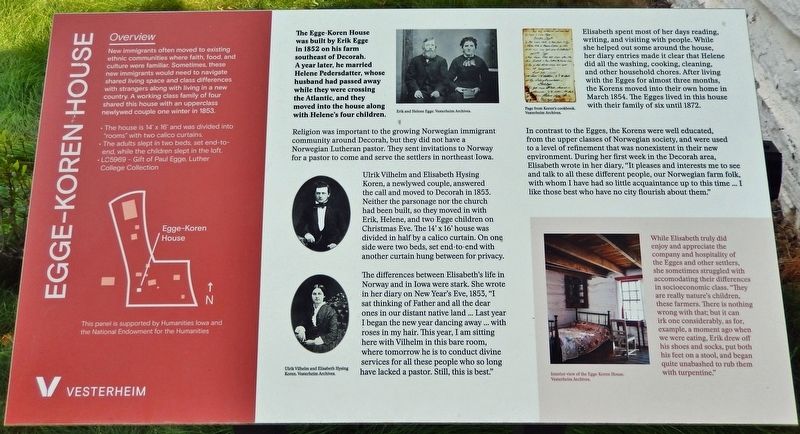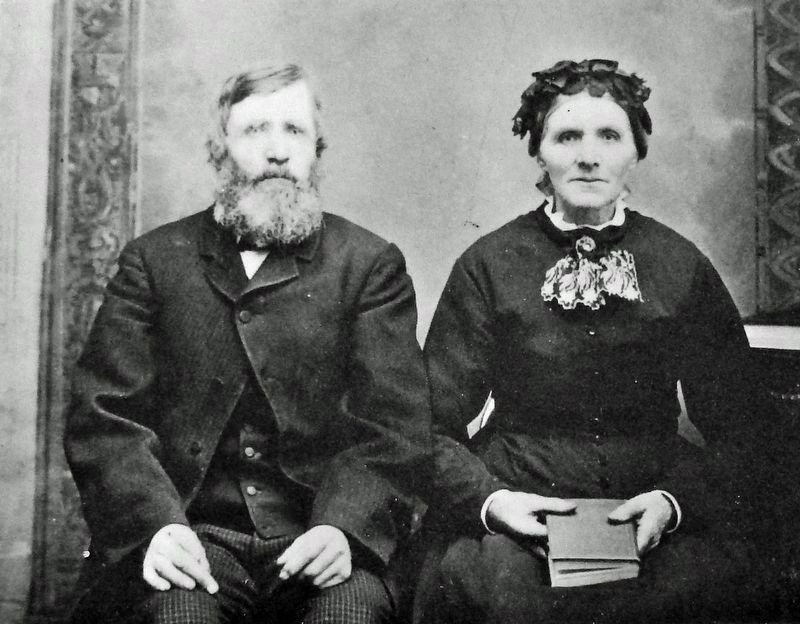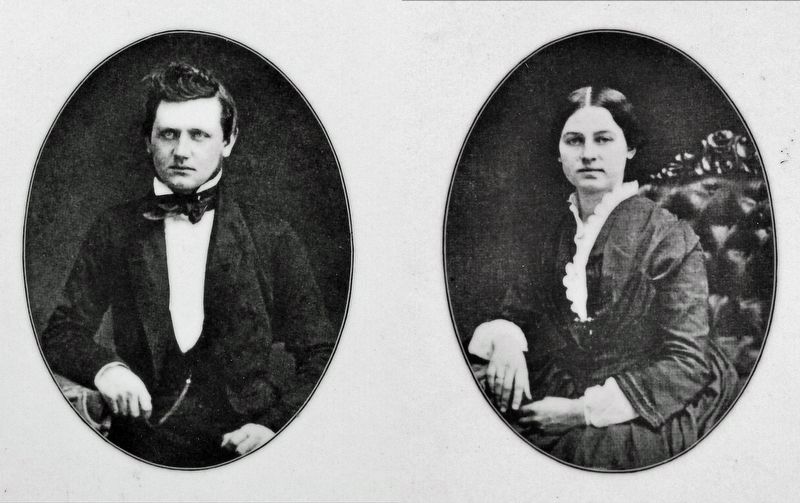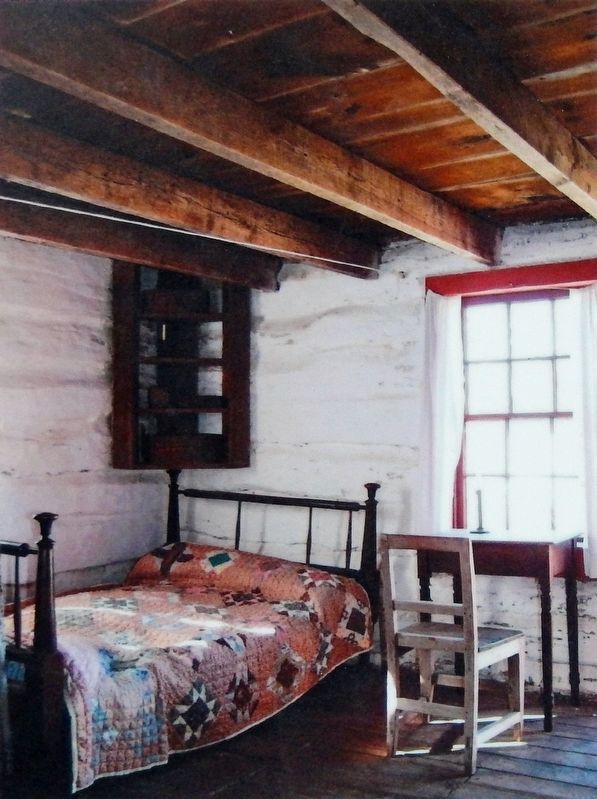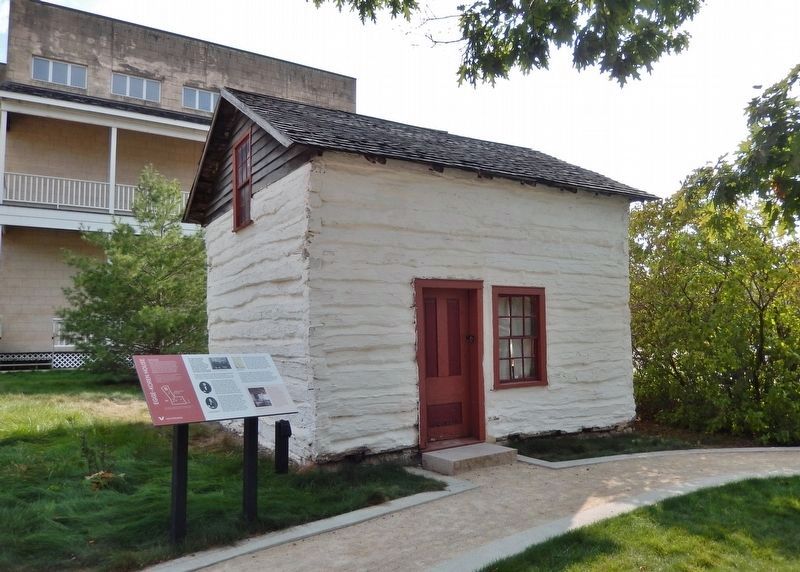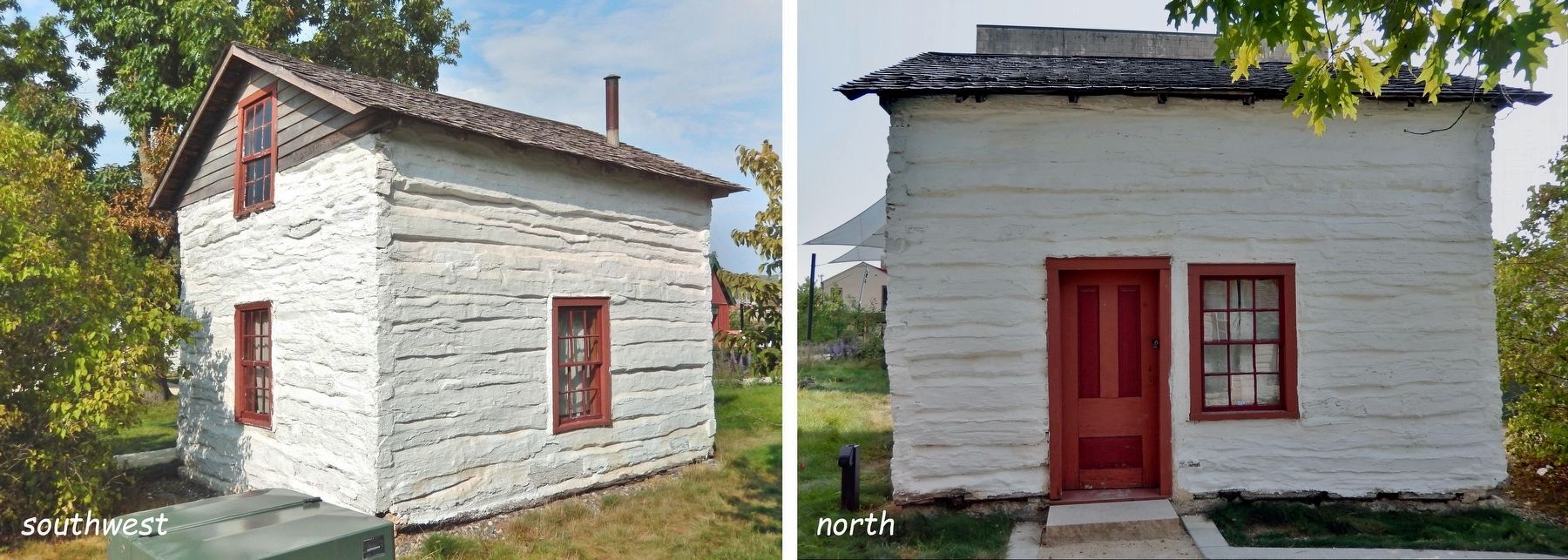Decorah in Winneshiek County, Iowa — The American Midwest (Upper Plains)
Egge-Koren House
Heritage Park, Vesterheim Norwegian-American Museum
Overview
New immigrants often moved to existing ethnic communities where faith, food, and culture were familiar. Sometimes, these new immigrants would need to navigate shared living space and class differences with strangers along with living in a new country. A working class family of four shared this house with an upperclass newlywed couple one winter in 1853.
• The house is 14' x 16' and was divided into "rooms" with two calico curtains.
• The adults slept in two beds, set end-to-end, while the children slept in the loft.
• LC5969 - Gift of Paul Egge, Luther College Collection
The Egge-Koren House was built by Erik Egge in 1852 on his farm southeast of Decorah. A year later, he married Helene Pedersdatter, whose husband had passed away while they were crossing the Atlantic, and they moved into the house along with Helene's four children.
Religion was important to the growing Norwegian immigrant community around Decorah, but they did not have a Norwegian Lutheran pastor. They sent invitations to Norway for a pastor to come and serve the settlers in northeast Iowa.
Ulrik Vilhelm and Elisabeth Hysing Koren, a newlywed couple, answered the call and moved to Decorah in 1853. Neither the parsonage nor the church had been built, so they moved in with Erik, Helene, and two Egge children on Christmas Eve. The 14' x 16' house was divided in half by a calico curtain. On one side were two beds, set end-to-end with another curtain hung between for privacy.
The differences between Elisabeth's life in Norway and in Iowa were stark. She wrote in her diary on New Year's Eve, 1853, “I sat thinking of Father and all the dear ones in our distant native land ... Last year I began the new year dancing away ... with roses in my hair. This year, I am sitting here with Vilhelm in this bare room, where tomorrow he is to conduct divine services for all these people who so long have lacked a pastor. Still, this is best.”
Elisabeth spent most of her days reading, writing, and visiting with people. While she helped out some around the house, her diary entries made it clear that Helene did all the washing, cooking, cleaning, and other household chores. After living with the Egges for almost three months, the Korens moved into their own home in March 1854. The Egges lived in this house with their family of six until 1872.
In contrast to the Egges, the Korens were well educated, from the upper classes of Norwegian society, and were used to a level of refinement that was nonexistent in their new environment. During her first week in the Decorah area, Elisabeth wrote in her diary, “It pleases and interests me to see and talk to all these different people, our Norwegian farm folk, with whom I have had so little acquaintance up to this time ... I like those best who have no city flourish about them.”
While Elisabeth truly did enjoy and appreciate the company and hospitality of the Egges and other settlers, she sometimes struggled with accommodating their differences in socioeconomic class. “They are really nature's children, these farmers. There is nothing wrong with that; but it can irk one considerably, as for, example, a moment ago when we were eating, Erik drew off his shoes and socks, put both his feet on a stool, and began quite unabashed to rub them with turpentine.”
[other photo captions]
• Page from Koren’s cookbook.
Erected by Vesterheim Norwegian-American Museum.
Topics. This historical marker is listed in these topic lists: Architecture • Churches & Religion • Immigration • Settlements & Settlers. A significant historical year for this entry is 1852.
Location. 43° 18.289′ N, 91° 47.516′ W. Marker is in Decorah, Iowa, in Winneshiek County. Marker can be reached from North Mill Street just north of West Water Street, on the right when traveling north. The marker is located in Vesterheim Norwegian-American Museum Heritage Park. Touch for map. Marker is at or near this postal address: 520 West Water Street, Decorah IA 52101, United States of America. Touch for directions.
Other nearby markers. At least 8 other markers are within walking distance of this marker. Valders House (a few steps from this marker); Stabbur (a few steps from this marker); Rovang Schoolhouse (a few steps from this marker); Norsvin Mill (a few steps from this marker); Haugan House (within shouting distance of this marker); Bethania Church (within shouting distance of this marker); Vesterheim (within shouting distance of this marker); Wickney House (within shouting distance of this marker). Touch for a list and map of all markers in Decorah.
Related markers. Click here for a list of markers that are related to this marker. Vesterheim Norwegian-American Museum Heritage Park
Also see . . . Egge-Koren House. (Includes link to a virtual tour of the interior.) Excerpt:
Rural Decorah, Iowa (1852). A typical first home built by immigrants of the husmann, or tenant farmer class, in Norway. It has been preserved in part because the owners, the Egge family, hosted a newly arrived Norwegian pastor, U.V. Koren, and his wife Elisabeth over the winter of 1853-54. U.V. Koren eventually established congregations and a legacy of service in a large geographic area out from Decorah. Elisabeth’s diary, available in Vesterheim’s Museum Store, describes the house and recounts local pioneer life in detail.(Submitted on November 19, 2023, by Cosmos Mariner of Cape Canaveral, Florida.)
Credits. This page was last revised on November 24, 2023. It was originally submitted on November 16, 2023, by Cosmos Mariner of Cape Canaveral, Florida. This page has been viewed 67 times since then and 8 times this year. Photos: 1, 2, 3, 4, 5, 6. submitted on November 19, 2023, by Cosmos Mariner of Cape Canaveral, Florida.
